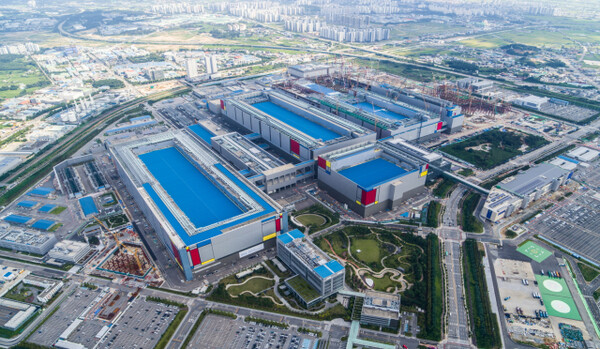Pyeongtaek P1 and Hwaseong NAND lines partially converted to DRAM

Samsung Electronics will convert part of its NAND flash production lines at the Pyeongtaek and Hwaseong campuses into DRAM production facilities to respond to the surging semiconductor DRAM demand driven by the global expansion of artificial intelligence (AI) infrastructure investment. The company also plans to establish Pyeongtaek Plant 4 (P4) as a DRAM-dedicated line applying the latest process (1c) to maximize profits.
An industry insider said on Nov. 20, “Samsung Electronics is taking a conservative approach to the NAND flash market,” adding, “General-purpose DRAM demand is significantly increasing and prices are expected to continue rising, so the company is proceeding with work to increase production volume.”
Memory semiconductors, which assist the rapid operations of central processing units (CPUs) and graphics processing units (GPUs), are experiencing shortages as global big tech companies are competing to invest in AI infrastructure. In particular, recent market demand for DRAM has been identified as reaching three times the supply capacity of the three major memory companies: Samsung Electronics, SK Hynix, and Micron Technology. According to industry sources, some companies have offered to increase prices for Samsung Electronics’ high-capacity server DRAM, including 96GB and 128GB double data rate 5 (DDR5), by 70%, but they have been unable to secure volumes due to insufficient supply. Major big tech companies, anticipating continued DRAM supply shortages, have entered negotiations for supply volumes for 2027.
Samsung Electronics plans to convert part of its NAND flash production facilities into DRAM production lines to meet the surging demand. Currently, the company produces DRAM and NAND flash at Pyeongtaek Plant 1 (P1), Plant 3 (P3), and the Hwaseong campus. Pyeongtaek P1 and the Hwaseong campus operate as hybrid lines that produce both DRAM and NAND flash. Samsung Electronics will proceed with expansion by reducing NAND flash production facilities and expanding DRAM production facilities at P1 and the Hwaseong campus.
Additionally, P4, which is currently undergoing finishing construction, will be completed as a 10-nanometer (1 nm = one billionth of a meter) class 6th generation (1c) DRAM production facility and begin operations next year. Furthermore, the company is reviewing a plan to produce DRAM at Plant 2 (P2), which was originally planned to house foundry (semiconductor contract manufacturing) production facilities.
Once facility investment is completed as early as the first half of next year, the existing hybrid lines at Pyeongtaek P1 and the Hwaseong campus will have a higher proportion of DRAM production, while P4 and others will house new DRAM production lines, significantly increasing production capacity. The reduced NAND flash production volume domestically is known to be addressed by increasing production at the Xi’an plant in China. An industry official said, “While there are many suppliers for NAND flash, the three memory companies are everything for DRAM,” adding, “Increasing production of highly profitable DRAM creates a structure where profits also increase together.”


